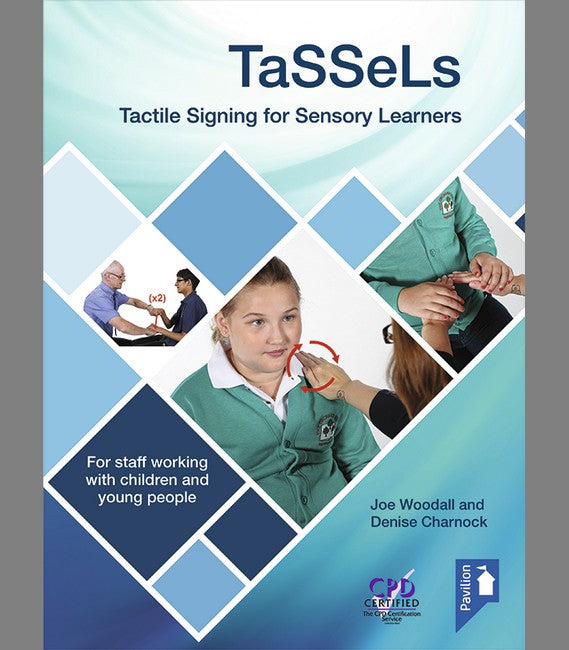Description
Part 1: Introduction Part 2: Rationale Part 3: The TaSSeLs system Section 1: Overview of the TaSSeLs system Section 2: Hand-under-hand (preferred method) Section 3: Hand-under-hand (adapted method) Section 4: On-body method Section 5: Progression of signs Section 6: Occupational therapy and physiotherapy considerations Part 4: The core vocabulary Section 1: Getting started Section 2: `Alert' sign Section 3: Core vocabulary signs (A to Z index) Section 4: Core vocabulary signs (photographs) Part 5: The TaSSeLs DVD and CD-rom Section 1: The TaSSeLs DVD Section 2: The TaSSeLs resource CD-rom Part 6: Targets Section 1: Monitoring and recording progress Section 2: Using the target forms Part 7: Consistency, consistency! Section 1: Co-worker monitoring system Section 2: Using the record forms References Appendix A: Alert sign and core vocabulary Appendix B: Technical support Appendix C: Troubleshooting Appendix D: Frequently Asked Questions Appendix E: Pilot project
Joe Woodall has been working with children and young people with special educational needs and challenging behaviour since the 1970s. In the 1990s, he was introduced to the world of visual impairment. Since then, Joe's work has continued to develop, and he is now a specialist in the field of profound and complex learning disabilities, working particularly with children and young people, and is an advisory teacher for visual impairment. Denise Charnock is a senior children's speech and language therapist and a member of the Royal College of Speech and Language Therapists (RCSLT). Since 1991 she has been supporting those with learning disabilities to develop functional communication and to lead independent lives. In 2012 she gained honours in her speech and language therapy degree. She currently works within the children's therapies team in Sandwell and her work involves identifying and supporting the communication needs of young people including those with complex learning needs.

